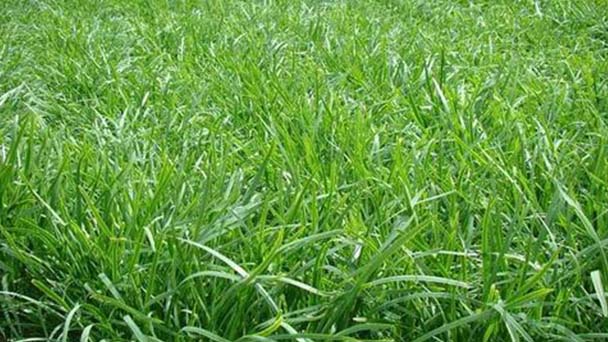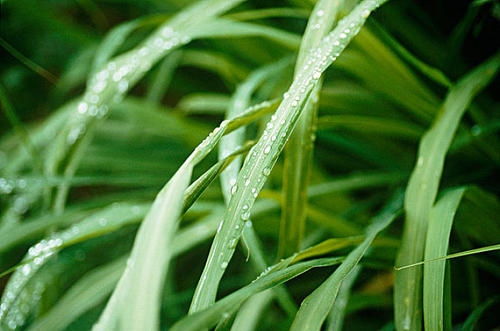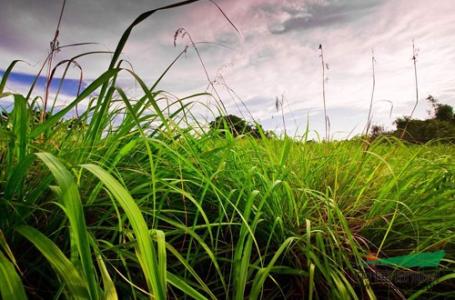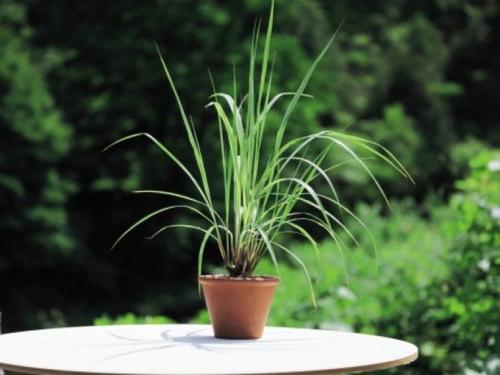Lemongrass profile
Written by Maggie
Jan 31 2021

Lemongrass plant, scientific name Cymbopogon citratus, has the fragrance of lemon. It is a powerful bactericide when making tea and drinking it. Lemongrass can prevent various infectious diseases and cure stomach ache, diarrhea, headache, fever and influenza. The stem and leaves are rich in volatile oil. Essential oils distilled from stems and leaves can be used in foods or in the manufacture of cosmetics, perfumes and soap flavours.
Lemongrass picture

Morphological characteristics of lemongrass
Lemongrass (Cymbopogon citratus) is a perennial dense cluster of aromatic herbs. Culms are up to 2 m, stout, intersected with white wax powder. Leaf sheaths are glabrous, not curling outwards, pale green on the inside; Ligule of Lemongrass is thick, ca. 1 mm long;Leaf blade 30 -- 90 cm long, 5 -- 15 mm wide, apically long acuminate, smooth or margin scabrous.
Pseudo Panicle of Lemongrass is with multiple compound branches, ca. 50 cm long, dispersed, branches slender, apically pendulous; Flame bracts are 1.5 (-2) cm long; Racemes of Lemongrass are unequal, with 3-4 or 5-6 nodes, ca. 1.5 cm; Peduncle is glabrous; Raceme axis internode and spikelet stalk 2.5-4 mm, margin sparsely pubescent, apex enlarged or dentate cleft.
Spikelets of Lemongrass (Cymbopogon citratus) are sessile linear-lanceolate, 5 -- 6 mm long, ca. 0.7 mm wide; First dorsal glume is flat or concave groove, veinless, upper with narrow wings, margin with short cilia;Second lemma narrow, ca. 3 mm long, apex 2-denticulate, awnless or with an apex ca. 0.2 mm long. The stalked spikelet of Lemongrass is 4.5-5 mm long.
Lemongrass growing environment
Lemongrass (Cymbopogon citratus) is highly adaptable and thrives in warm and sunny climates. For the soil selection is relatively loose, fertile and well drained sandy loam soil is better.
Lemongrass distribution range
Lemongrass (Cymbopogon citratus) was originally produced in tropical Asia such as India, Sri Lanka, now produced in Indonesia, mainland China, Thailand, Vietnam, South and North America, Africa, Brazil, Paraguay, the United Kingdom and other places.

Lemongrass main value
The whole plant of Lemongrass (Cymbopogon citratus) has the flavor of lemon, stem and leaves are rich in volatile oil. Essential oils extracted from stems and leaves can be used in food or cosmetics, perfumes and soap fragrances.
Lemongrass growing methods
You can plant only one seed per pot, or you can plant Lemongrass in a large pot, or you can plant it in the garden if you have a small yard at home. A ready place for planting, in which seedlings are removed from pots; Care must be taken not to overdry the root of the Lemongrass during transplanting. Before the actual transplanting work, the planting steps should be kept in mind so that the work can proceed smoothly; If you use a purchased pot plant, the Lemongrass plant has already grown to a certain size in the container, so planting is much easier. Don't let the roots get dry or injured when planting. Whether in a container or garden, the first step must be to prepare the site in advance before taking out the plants for planting.
Lemongrass (Cymbopogon citratus) likes enough sunshine and a high temperature wet environment, cold resistance is weak, sometimes the temperature at 10-15℃ will atrophy or death; The soil has good water retention and water supply must be adequate.
Lemongrass propagation methods
Lemongrass (Cymbopogon citratus) mainly uses sub-plant propagation, sub-plant planting in spring, in May for fertilization, summer in high temperature and drought should pay attention to watering, keep the soil moist. Transplant once every 34 years.

Latest Updated
- Benefits of Bugleweed - 7 Science-backed Health Benefits
- Bugleweed Dangers & Side Effects - Is It Poisonous?
- How to Plant Evergreen Trees - What You Should Know
- When to Plant Evergreens - Grow Guide for Evergreen Trees
- 12 Wonderful Evergreen Shrubs for Your Garden
- 12 Popular Evergreen Plants with Pictures for Beginners
- When And How To Prune A Lilac Bush Like a Pro
- How to Grow & Care for Lilac Vine (Hardenbergia Violacea)
- Japanese Lilac Tree (Syringa Reticulata) Care & Propagation Guide
- Shumard Oak Pros and Cons - What to Know
Popular Articles
- Winter maintenance of Antirrhinum Majus
- How to Grow Terminalia Mantaly Tree
- How to Grow and Care for Crossostephium Chinense
- How to grow Antirrhinum Majus in spring
- Peristeria Elata (Dove Orchid) Profile: Info & Care Guide
- Underwatered Snake Plant (Sansevieria Trifasciata) - Signs And How To Fix
- How to Care for Brazilian Jasmine Plant (Mandevilla Sanderi)
- How to Grow & Care for Graptopetalum Purple Delight in Summer
- Rosa Chinensis (China Rose): Plant Growing & Care Tips
- How to Care for Baby Sun Rose (Aptenia Cordifolia)